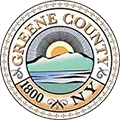In April 2020, New York State adopted, as part of its budget, the Accelerated Renewable Energy Growth and Community Benefit Act. The new law is intended to streamline and accelerate the siting and development of large-scale renewable energy project, namely utility scale solar facilities.
The acceleration of the siting and development of renewable facilities is to help the State meet the climate and energy goals of the Climate leadership and Community Protection Act (CLCPA), which includes establishing programs to meet a minimum of 70% statewide electric generation be produced by renewable energy systems by 2030, and that by the year 2040 the statewide electrical demand system will generate zero emissions.
The Act creates the Office of Renewable Energy Siting under the Department of Economic Development. The office will be responsible for the environmental review and permitting of major renewable energy projects by “improving and streamlining the process for environmentally responsible and cost effective siting of large-scale renewable energy projects.”
It is the intent of the Act to create a coordinated and timely review of proposed major renewable energy facilities to meet the state’s renewable energy goals while ensuring the protection of the environment and consideration of all pertinent social, economic, and environmental factors in the decision to permit such facilities. The new Office of Renewable Energy Siting is to work with municipalities to garner input, run the public comment process, and adjudicate substantive concerns.
This application review process and approval requires consultation with the municipality or political subdivision where the project is proposed to be located. The Office of Renewable Energy must actively seek public input and adhere to local laws and regulations, such as local solar siting laws, unless the Office of Renewable Energy determines that the local regulations as applied to the proposed major renewable energy facility, are “unreasonably burdensome in view of the CLCPA targets and the environmental benefits of the proposed major renewable energy facility.”
The office is to establish uniform standards and conditions that are designed to avoid or minimize, to the maximum extent practicable, any potential significant adverse environmental impacts related to the siting, design, construction and operation of a major renewable energy facility. The office is to seek public comment during the initial development of uniform standards and conditions through four public hearings across the state.
To the extent that environmental impacts are not completely addressed by uniform standards and conditions and site-specific permit conditions proposed by the office, and the office determines that mitigation of impacts may be achieved by off-site mitigation, the office may require payment of a fee by the applicant to achieve off-site mitigation.
The streamlined review under section 94-c of the NY Executive Law will now be used for review and permitting of larger scale renewable energy facilities instead of the existing Article 10 process. Until uniform standards and conditions are established and promulgates regulations specifying the content of an application for a siting permit are promulgated, an application for a siting permit submitted to the office shall continue in form and content to be subject to Article 10.
The office shall make a final decision on a siting permit for any major renewable energy project within one year from the date the application was deemed complete, or within six months from the date the application was deemed complete if the major renewable energy facility is proposed to be sited on an existing or abandoned commercial use, including without limitation, brownfields, landfills, former commercial or industrial sites, dormant electric generating sites, and abandoned or otherwise underutilized sites.
The Act also the creates a Clean Energy Resources Development and Incentives Program. It is the intent of this program to:
- Foster and encourage the orderly and expedient siting and development of renewable energy facilities, particularly at sites which are difficult to develop, such as previously developed sites, existing or abandoned commercial sites, brownfields, landfills, former commercial or industrial sites, dormant electric generating sites, or otherwise underutilized sites;
- Incentivize the re-use of previously developed sites for renewable energy facilities to protect the value of
taxable land, capitalize on exist infrastructure; - Support the provision of benefits to communities that host renewable energy facilities; and
- Protect environmental justice areas from adverse environmental impacts.
This program is to establish a “build ready” program with procedures and protocols for the purpose of establishment and transfer of “build-ready” sites
There are also provisions to establish one or more programs by which property owners and communities would receive incentives to host major renewable energy facilities.
A Host Community Benefit Program can include:
- Host community benefits agreements and (Payment In Lieu of Taxes) PILOT payments.
- A program through the Public Service Commission for utility bill discounts
- A Local Workforce Opportunities Fund – availability of workforce training in the local area of build-ready sites to support green jobs development, grants for clean energy training for workers within eligible communities
For each project, municipalities and community interveners will have access, as appropriate, to funds that will assist them in reviewing the project and aid them in providing comments to the Siting Office on a project compliance with local laws (NYSERDA).
Lastly the Act requires a comprehensive study for the purpose of identifying distribution upgrades, local transmission upgrades and bulk transmission investments that are necessary or appropriate to facilitate the timely achievement of the CLCPA targets.
The power grid study is to identify needed distribution upgrades and local transmission upgrades for each utility service territory and separately address needed bulk transmission system investments.
